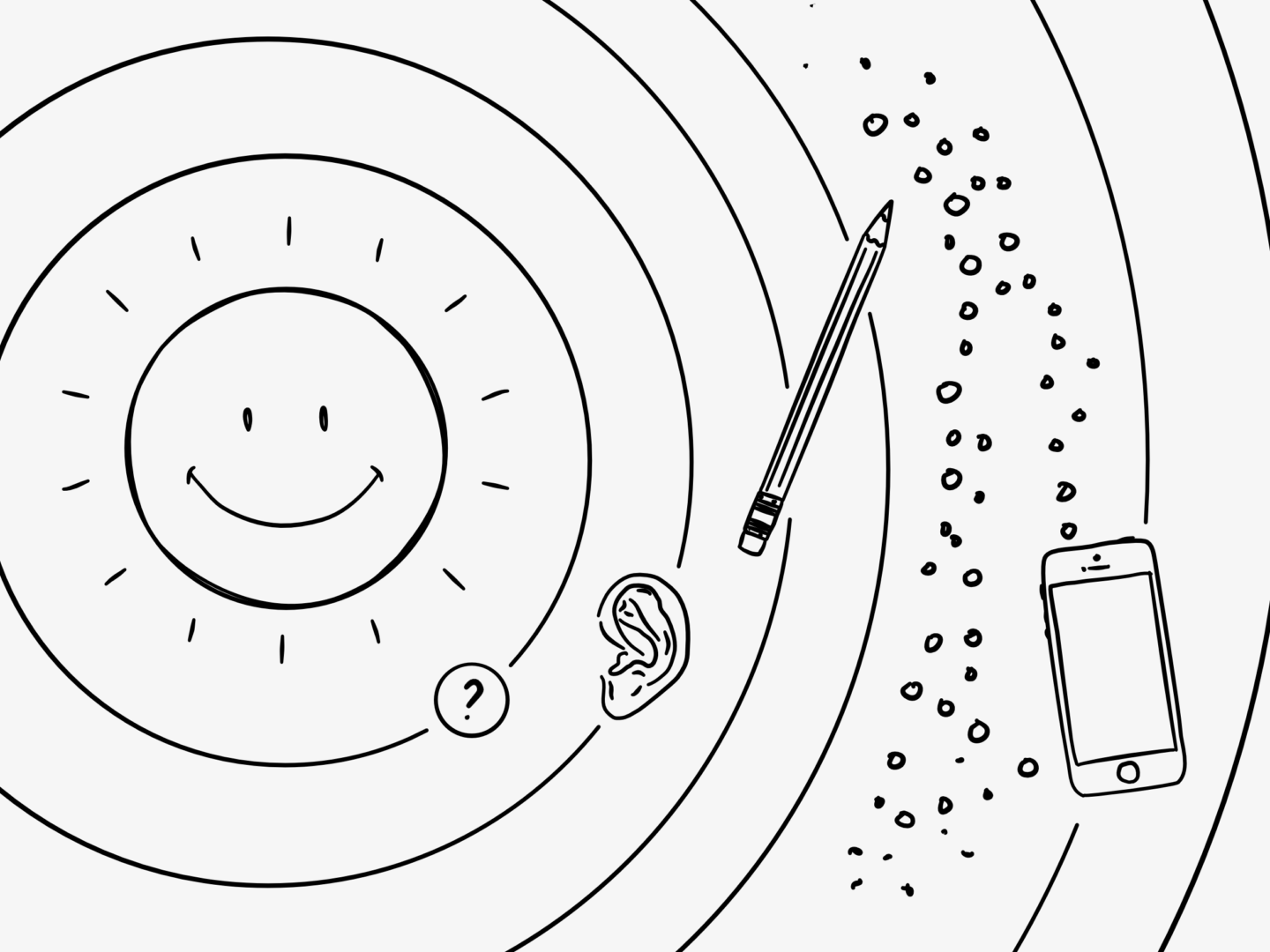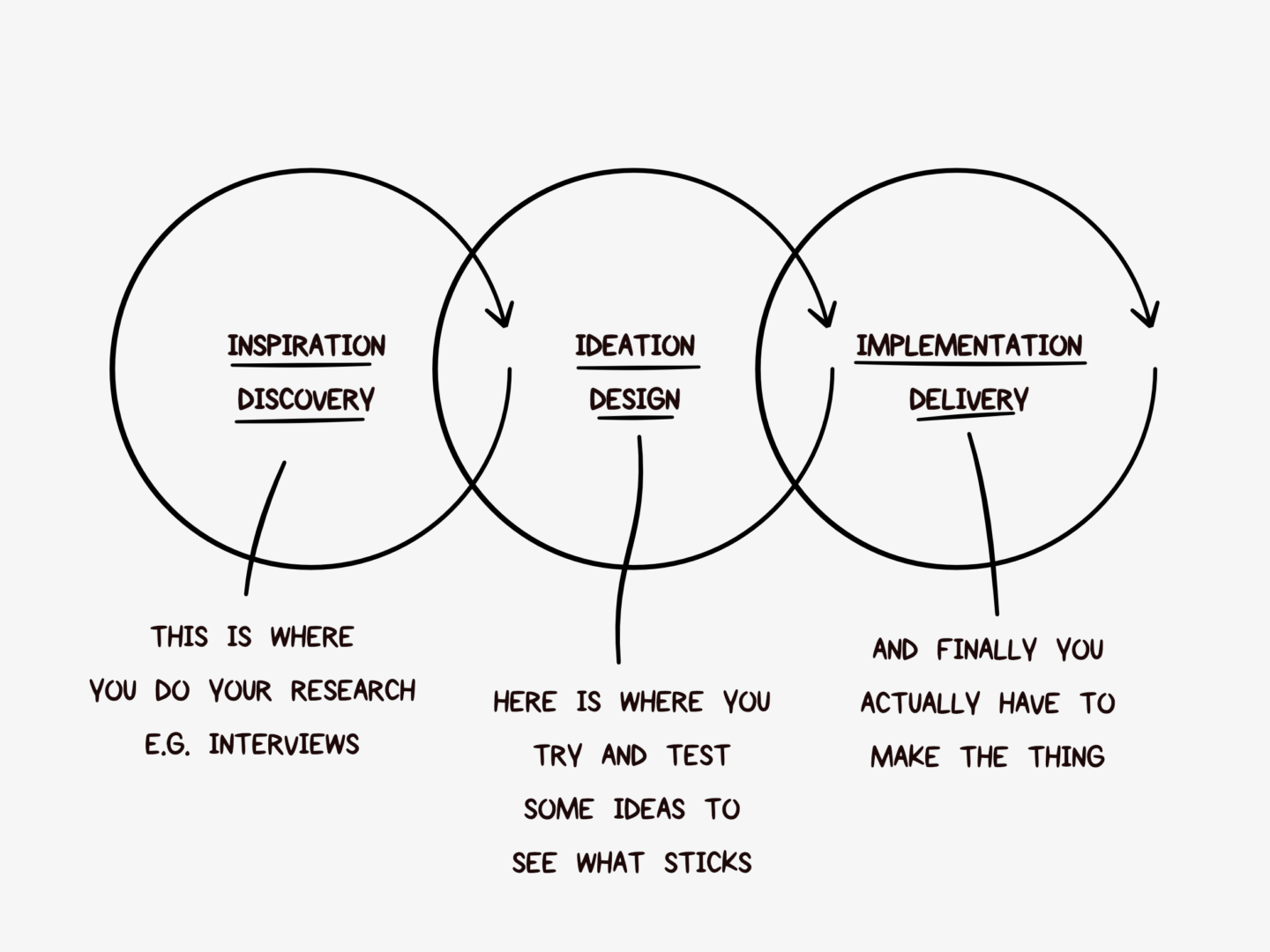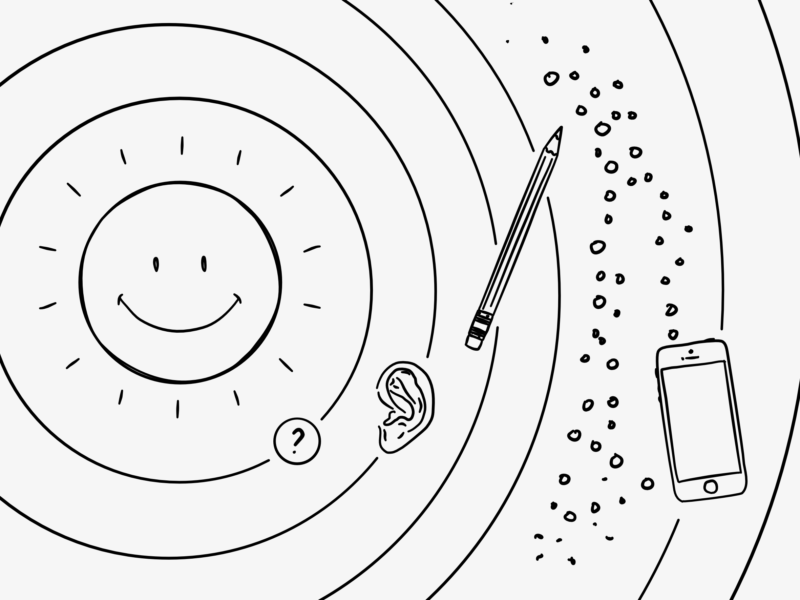One of the goals I set myself for the next year (of my life, rather than calendar) was to learn some new skills. There are a whole range of things I want to learn about from calligraphy to how to create animations digitally, but I’ve started with taking some time working on my design thinking skills. Along with a lovely group of colleagues I started Ideo’s human-centred design course.
The course is an introduction to design thinking essentially. It covers everything the theory of design thinking as well as leading you through a test project where you get to gain some hands-on experience of every stage of the design process from research to concepts to prototyping and actually making the thing. IDEO, a global design company who create positive impact through design, lead you through each step and give you tips and advice from their years of experience. It’s a completely free online course, that runs quite a few times throughout the year, so if you find anything in this post interesting at all I’d recommend it. It’s intended to be done as a group, so you might need to round up some friends too.

But what is human-centred design? According to Ideo it is a “process that starts with the people you’re designing for and ends with new solutions that are tailor-made to suit their needs. Human-centred design is all about building a deep empathy with the people you’re designing for; generating tons of ideas; building a bunch of prototypes; sharing what you’ve made with the people you’re designing for; and eventually putting your innovative new solution out into the world”. I’ve done a whole post on design thinking more generally that goes into a bit more depth, but in a nutshell, that’s the crux of what you need to know.
The human-centred design process follows 3 stages, that Ideo call inspiration, ideation and implementation. Where I work we call them discovery, design and delivery, but they cover the same ideas, as explained in the diagram below.

The first stage in making people the centre of your design universe is to engage with them. This user research phase is the part of the process I’ve had the most experience with at work, so I thought I’d walk you through it a little bit and give you some ideas for how you can apply the techniques to your own life, even if you’re not running a big design project.
User research can come in many forms with the most basic you might think of being desk research and interviews. But there are so many other ways to find out how people really behave. Observing how people go about their day to day lives can give you real insight into their unfiltered actions. You can also create diaries and have people share their thoughts and feelings, or work with your users to build something really hands on to see how they think. As well as researching the direct users of whatever you’re working it can also be fruitful to look for people doing whatever you’re looking to change well already in different sectors – find a group shows great team work, or an education process that’s really effective, or a product that service that caters really well to people with a specific need.
Human-centred design can be used to help you create products, services, spaces and systems. Those four areas cover a whole range of things that are super interesting, even if you’re not doing this for work. Here are just three:
- Could you use human-centred design to make your home work better? If you kept a log or a map of how you/your family use your space, you might find out that some areas are working better than others, and that there are some pain points that might be easily fixed. I’ve done this in my room in my bit of kitchen space, and little things like rearranging my cupboard so the things I use the most are easiest to reach has made such a difference.
- Could you use these methods to improve your commute? One of the first tasks in the course is to research your team’s commutes and work out how they could be improved. This is something anyone could do, either on your own by mapping out your journey or by getting someone else’s perspective by having a friend interview and vice versa.
- Could you improve how you, and your team work by researching the way that people actually handle their day to day tasks? Is there a better way to fulfil their needs so that everyone is at their best?
I’m planning on turning this into a bit of a running series/theme, so I might go into a bit more depth on how to get useful information out of people interviews, as well as some thoughts on the other stages of the design process. Let me know if there’s anything else you’d like to read about though!


